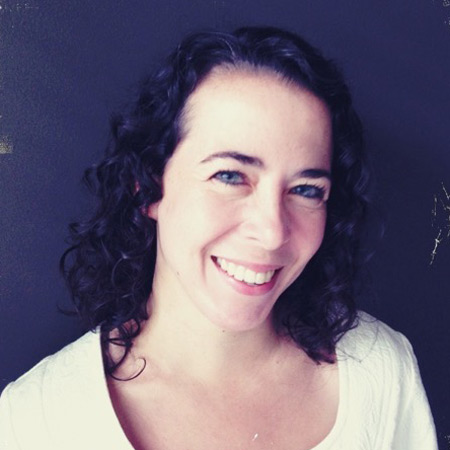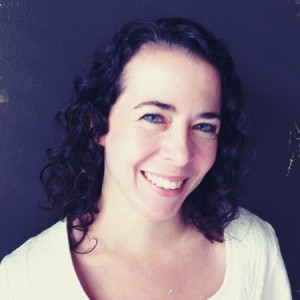
We’re so excited for you to get to know our 2016 Kathy Fish Fellow, Shasta Grant. Recently, we took a little time to ask her about her writing habits, her life abroad, and her big reading goals for 2016.
Interview by Annie Bilancini
Your bio mentions that you split time between Indianapolis and Singapore. Can you talk about what that’s like and how that might influence your writing?
I live in Singapore during the academic year because husband teaches at an international school there. We return home to Indianapolis during the summer and winter breaks. It can be exciting living abroad—we get to travel and learn about other cultures. But I’m a homebody so I’m just as happy staying home in my sweatpants with coffee and books. It’s difficult to be away from friends and family for so much of the year. We try to make the most of our time at home – lots of good food, beer and long conversations.
Living abroad and going back and forth to the U.S. several times a year has definitely influenced my writing. A sense of place had never been of primary importance to me in my fiction and while I’ll probably never write rambling descriptions of landscapes, my stories are now firmly rooted in place and time. Maybe in the opposite way I would have expected. I’ve been writing about a town loosely based on my New Hampshire hometown. Growing up, I couldn’t wait to move away. Now that I’m literally halfway around the world, I spend a lot of time thinking about where I come from. I’m interested in writing about people who remain in their hometowns. I know what it’s like to leave, so that perspective is less interesting to me.
With that in mind, what impulse most often drives your writing? That need to explore other perspectives? A particular question? A singular image?
The impulse varies from story to story. I’ll write in search of an answer but I may not even know the question when I start. Usually a story begins from something concrete: a line of dialogue or an object or a place. If the idea takes enough shape, then I start writing. For example: yesterday I remembered my high school had a senior lounge that got shut down at some point, for a reason I can’t remember, before I became a senior. I wrote “senior lounge” in my notebook and I’ve been thinking about it for two days, wondering if there’s a story there. If there is, I don’t currently have any idea what it’s about or what the larger question is beyond that room. I wish I knew where these initial ideas or inspirations come from and how to control them – it would make writing a lot easier.
So it starts with the notebook. What comes next? Are you a longhand drafter? Or is your next step a Word document?
My notebook is where I gather ideas, keep reading and submission lists, make workshop notes, etc. Drafting usually happens in a Word document although occasionally I’ll write short sections in a notebook. Once I have a working draft, I print it and revise on the page by longhand. I go through this process several times, using different colored pens and highlighters for each draft, until it’s finished. I keep an “in progress” folder on my desk for first drafts. Once a story or essay has a revision or two, it gets its own folder. That is the point I know I’m committed to the piece—when it gets its own folder.
I love that process. Each story goes through its own private ritual. That lends so much more weight to a project. On the subject of writerly rituals: are there any touchstone texts you return to for guidance, a novel or collection that acts as your literary yardstick?
My answer to this is always changing. It depends what I’ve been writing at the time and which books speak to the work I’m trying to do. Years ago I probably would have named a collection by Lorrie Moore, or maybe an Ann Patchett novel. My current literary yardstick books are Department of Speculation by Jenny Offill, The Lost Daughter by Elena Ferrante, and Blueprints for Building Better Girls by Elissa Schappell. So three books—one collection of connected stories and two trim novels—about girlhood/womanhood/motherhood. These are the books guiding me in my work right now.
Ferrante is on my list. I’ve been Ferrante Fever-adjacent for a while now. I need to take the leap this year! Do you have any specific reading goals for 2016? Any books you really want to get your hands on?
I hear Ferrante Fever is going around! I read the first novel in the Neapolitan series last fall and loved it. My husband gave me the remaining three books for Christmas. As far as reading goals for 2016, my plan is to read all the un-read books in my office. Because books are so expensive in Singapore, we tend to buy a lot when we are home. We’ll check a box full of books on each trip. The problem is that, of course, I go out and buy other books in the ensuing months and then I end up with piles of books waiting to be read.
Here are some books I’m really excited to read soon:
Winesberg, Indiana edited by Michael Martone and Bryan Furuness. It’s an anthology about the mythical town of Winesburg, Indiana with stories by some great writers, including Roxane Gay and Claire Vaye Watkins.
The Narrow Door: A Memoir of Friendship by Paul Lisicky. I was lucky to study with Paul at Sarah Lawrence and he’s one of the warmest, most generous teachers I’ve ever met. He’s also incredibly talented and I was thrilled to see that his new memoir got a wonderful review in The New York Times.
On Being Told That Her Second Husband Has Taken His First Lover by Tess Slesinger. I first read about this collection of stories in the Lost and Found section of Tin House. Katie Arnold-Ratliff wrote that she found the book at a flea market and that it is “a once-in-a-lifetime book: the sort that I knew, even then, would become a kind of mnemonic device. I would remember this time in my life as the era in which I met Tess Slesinger.” Between that recommendation and the title, I’ve been dying to get my hands on it.
 Shasta Grant is the 2016 SmokeLong Quarterly Kathy Fish Fellow. She is also the winner of the 2015 Kenyon Review Short Fiction Contest. Her story, “Most Likely To,” was selected by final judge, Ann Patchett. She has been nominated for a Pushcart Prize and her stories and essays are forthcoming or have appeared in The Kenyon Review, Epiphany, Gargoyle, cream city review, Jelly Bucket, Wigleaf, The Journal of Compressed Creative Arts, WhiskeyPaper, and elsewhere. She is a prose editor for Storyscape Journal and has presented at several conferences including The Indiana Gathering of Writers, and Winter Wheat: The Mid-American Review Festival of Writing. Shasta Grant received her MFA in Writing from Sarah Lawrence College in 2005 and was a 2007 Writer-in-Residence at Hedgebrook. She taught composition and creative writing for seven years for Ball State University. She has also taught creative writing at The Writers’ Center of Indiana and several women’s correctional facilities, including the Right-to-Write program in Valhalla, New York. Shasta grew up in New Hampshire. She currently lives in Singapore and Indianapolis with her husband, Chris Huntington, and their son.
Shasta Grant is the 2016 SmokeLong Quarterly Kathy Fish Fellow. She is also the winner of the 2015 Kenyon Review Short Fiction Contest. Her story, “Most Likely To,” was selected by final judge, Ann Patchett. She has been nominated for a Pushcart Prize and her stories and essays are forthcoming or have appeared in The Kenyon Review, Epiphany, Gargoyle, cream city review, Jelly Bucket, Wigleaf, The Journal of Compressed Creative Arts, WhiskeyPaper, and elsewhere. She is a prose editor for Storyscape Journal and has presented at several conferences including The Indiana Gathering of Writers, and Winter Wheat: The Mid-American Review Festival of Writing. Shasta Grant received her MFA in Writing from Sarah Lawrence College in 2005 and was a 2007 Writer-in-Residence at Hedgebrook. She taught composition and creative writing for seven years for Ball State University. She has also taught creative writing at The Writers’ Center of Indiana and several women’s correctional facilities, including the Right-to-Write program in Valhalla, New York. Shasta grew up in New Hampshire. She currently lives in Singapore and Indianapolis with her husband, Chris Huntington, and their son.

 The SmokeLong Grand Micro Contest (The Mikey) is now an annual competition celebrating and compensating the best micro fiction and nonfiction online.
The SmokeLong Grand Micro Contest (The Mikey) is now an annual competition celebrating and compensating the best micro fiction and nonfiction online.